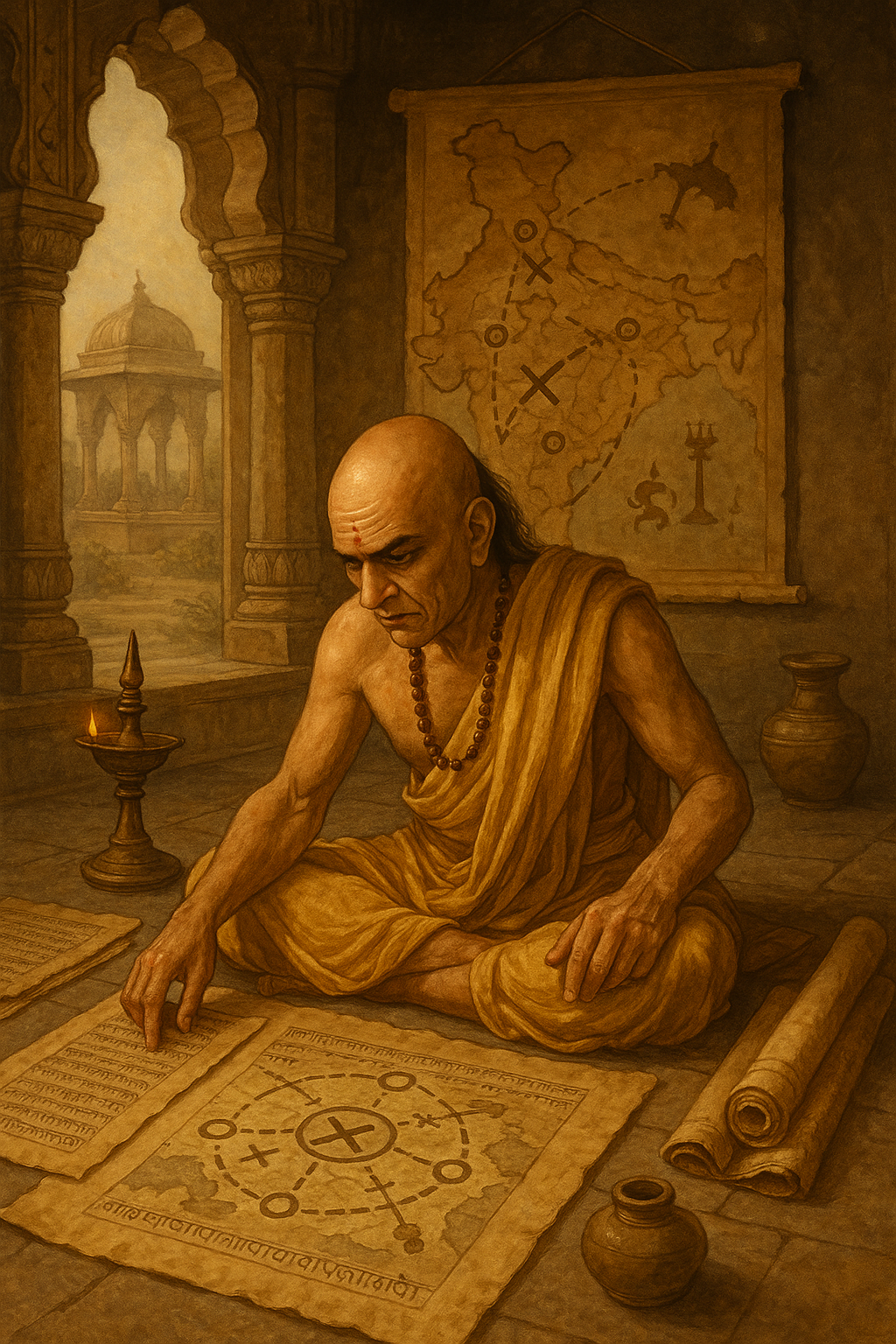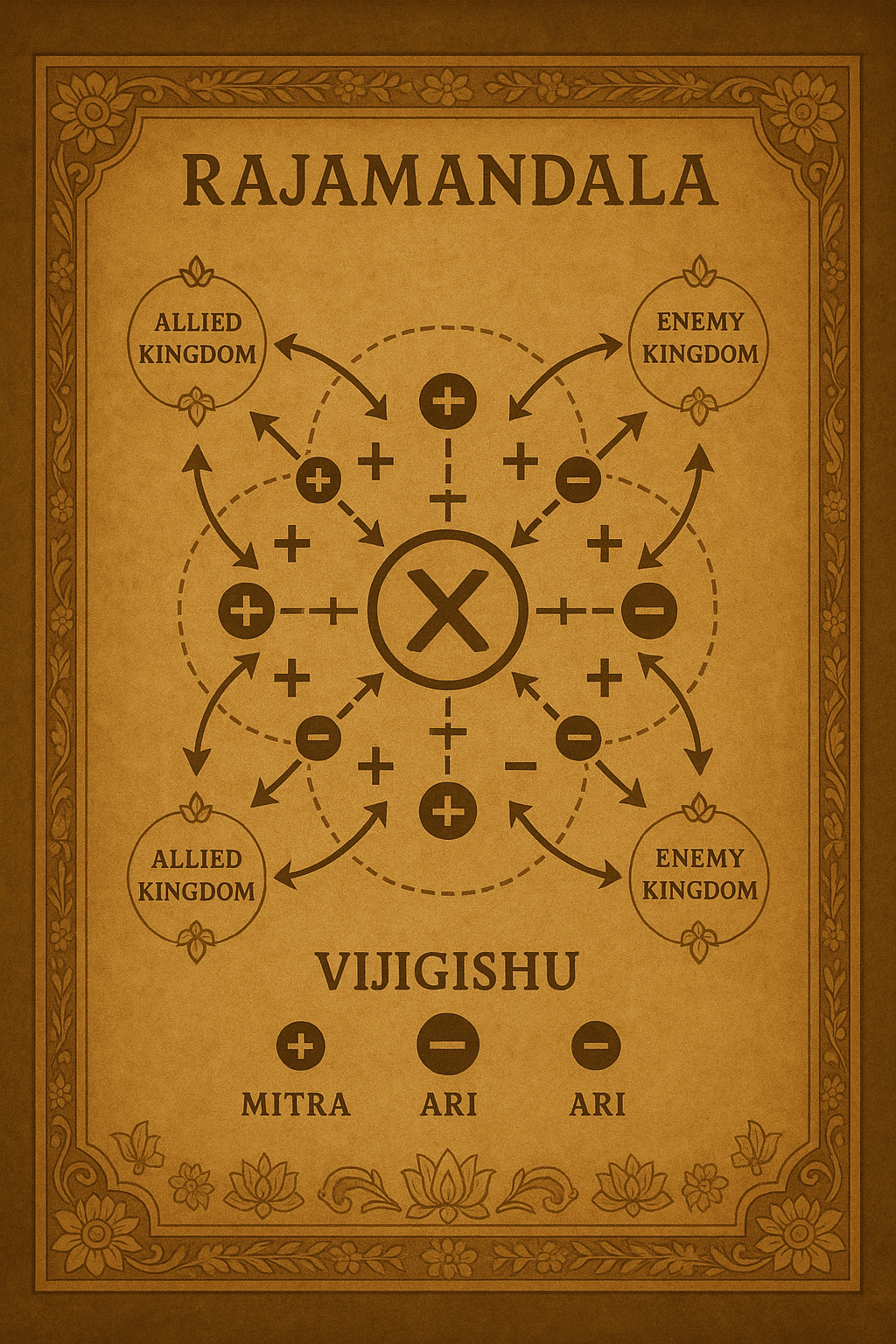Ancient strategic project planning with Arthashastra

Ancient strategic project planning, as articulated in Kautilya’s Arthashastra (4th century BCE), presents a comprehensive and sophisticated framework for ensuring success in statecraft, economic management, and long-term governance. The Arthashastra's principles remain influential—many are echoed in contemporary strategic management, leadership, and organizational planning.
Strategic Vision and Long-term Planning
Kautilya (Chanakya) emphasized the necessity for a clear and ambitious strategic vision, urging rulers to anticipate long-term challenges and pursue well-defined goals[1][3]. This approach required meticulous preparation and forward-thinking, underpinning the idea that both leaders and organizations must identify and articulate long-term objectives before embarking on major initiatives[1][3]. Looking beyond immediate concerns, strategic planning in the Arthashastra addressed sustainability, resilience, and adaptability—qualities essential for state survival and prosperity[1][2][3].
SWOT Analysis and Scenario Planning
The Arthashastra introduces remarkably modern tools for project planning. Kautilya advocates for detailed assessments of strengths, weaknesses, opportunities, and threats—what is now known as SWOT analysis[1][3]. Prior to launching new policies or campaigns, rulers were instructed to analyze their position relative to rivals, available resources, internal vulnerabilities, and external risks[1][2]. This process included scenario planning (anticipating multiple future possibilities) and contingency strategies for both best- and worst-case outcomes[2][3].
Realpolitik and Adaptive Strategy
A hallmark of Arthashastra is its embrace of realpolitik—pragmatic, results-oriented decision-making based on practical circumstances rather than ideals[2][4]. Kautilya urges leaders to prioritize flexibility and remain ready to revise strategies as conditions change[2][4]. The text outlines a range of strategic options including peace, war, alliances, neutrality, and dual policies (making peace with one entity while waging war against another)[2]. This multiplanar thinking mirrors modern project management approaches that require flexible, adaptive strategic planning and risk mitigation[2][3].
The Rajamandala Theory: Complex Stakeholder Mapping

Kautilya’s Rajamandala theory remains an early example of stakeholder mapping and power dynamics analysis[2][4]. It identifies 12 types of neighboring states—friends, enemies, neutrals, and more—and prescribes diplomatic, military, or economic strategies based on each context[2][4]. This approach guided kings in choosing between conflict, collaboration, or neutrality and is analogous to mapping stakeholders, competitors, and collaborators in major projects.
Delegation, Human Resource Management, and Decentralization
The Arthashastra advocates a meritocratic approach in the selection and development of administrators, highlighting the importance of competent, well-trained officials[1]. It recommends decentralized decision-making, where power is delegated to those best equipped for specialized tasks[1]. In project management, this principle is analogous to building high-performance teams, delegating tasks effectively, and investing in continuous training.
Ethics, Accountability, and Governance
Kautilya emphasizes the critical role of ethical leadership, accountability, and transparency. Rulers are advised to act with fairness, integrity, and responsibility—qualities that facilitate public trust and organizational stability[3]. Good governance is fostered through clear policies, effective oversight, and incentive systems that reward loyalty and strong performance[3]. These principles provide a foundation for robust project governance frameworks in today’s organizations.
Alliance-building, Diplomacy, and Risk Mitigation
Strategic alliance-building is a central theme. Kautilya urges the leveraging of treaties, diplomatic relationships, and networks to augment a kingdom’s strength and offset vulnerabilities[4]. The text also underscores proactive risk management through espionage, intelligence gathering, and scenario-based war games—tools designed to anticipate competitor moves and environmental changes[4].
Military Strategy, Resource Planning, and Execution
Projects of conquest or large-scale transformation required stepwise planning, from resource mobilization and logistics to phased execution and follow-up governance[4]. The Arthashastra’s military guidelines—from surprise attacks and psychological warfare to consolidation of newly acquired territories—mirror strategic project implementation cycles and ongoing monitoring.
Conclusion
The Arthashastra’s model of ancient strategic project planning stands out for its analytical rigor, adaptability, and applicability far beyond its original time. It remains a cornerstone of Indian and global strategic thought, offering actionable lessons in vision-setting, risk management, alliance-building, ethical leadership, and scenario planning—principles equally vital to modern project and organizational success[1][2][3][4].
Comments
Post a Comment